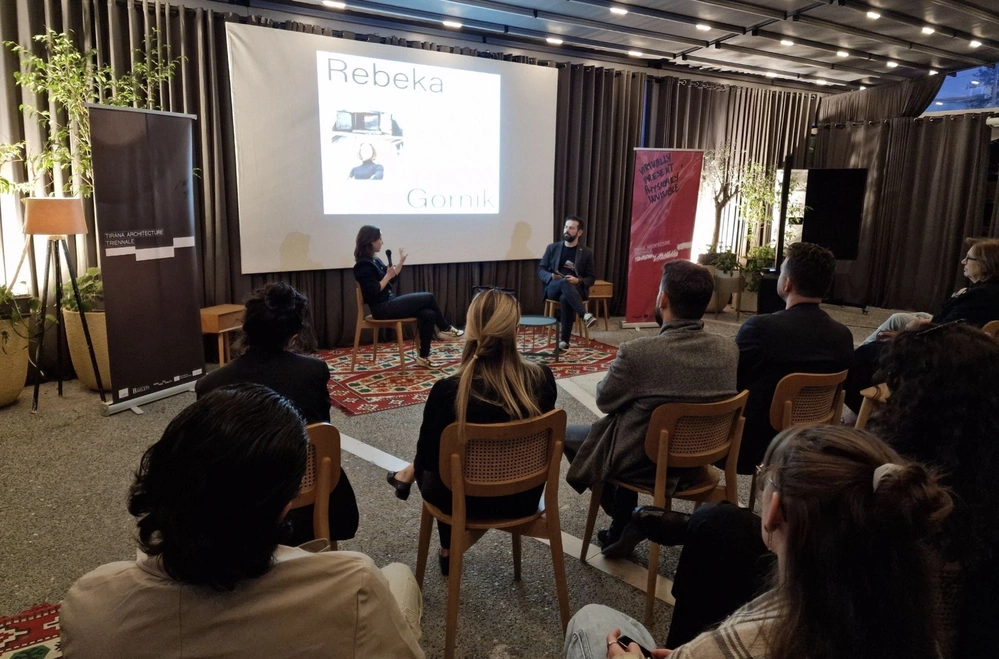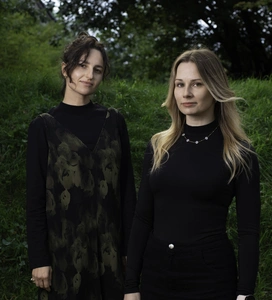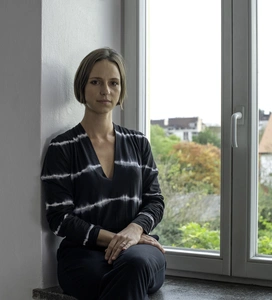Tirana Architecture Triennale: Virtually Present, Physically Invisible Vol. II – Permanent Temporality

The participation of LINA Fellows during Tirana Architecture Triennale Vol.II is composed as a trilogy within a trilogy exploring the topic “Virtually Present, Physically Invisible”. The fellows explore topics linked with material and immaterial, within the frame of academia, professionals and community.
Collaboration with LINA fellows
Polymer-ous Therapy
Foil & Soil Mishmash / Magdalena Gorecka, Magdalena Skowyra
In 2020, a significant milestone was reached as the total mass of human-made materials surpassed that of Earth's living biomass. These materials, predominantly found in urban areas, include cement, metal, glass, and plastic. Despite their efficiency and durability, they have also contributed to a disconnection from shared habitats with other species. Polymer-ous Therapy workshop focuses on material interventions in the context of incomplete and abandoned urban structures within the city of Tirana with the goal being increasing overall biodiversity in the urban environment documented also visually. The workshop emphasizes a holistic design process that includes mapping, 3D scanning and prototyping through material interventions. The objective is to both metaphorically and physically "heal" the selected incomplete structures while developing an urban “Polymer-ous Therapy Strategy” that enhances the presence of various species in the urban context.
State of Preparedness
Rebeka Bratoz Gornik
The film delves into the repurposing of Albania's military heritage, focusing on the ubiquitous bunkers scattered across the landscape and the underground city of Kukes. It distinguishes between the reuse of military heritage in rural and urban settings. Following the journey of an artist and former political prisoner, the film unveils their unique perspective on the bunkers while examining how the looming threat of war invasion influenced planning on various geographical scales. Through individual insights and experiences, the narrative explores the monumental task of constructing underground cities and the staggering number of 170,000 bunkers. Additionally, it investigates potential strategies for reuse in the event of another invasion.
Outcomes
The involvement of LINA Fellows was constructive and creative during Tirana Architecture Triennale. The fellows had the opportunity to meet with prominent local architects and urban planners who are actively involved in shaping the urban landscape of Tirana. Interaction with professors and students provided a rich exchange of ideas and facilitated discussions on contemporary architectural trends and urban development. Engaging with community leaders and local residents helped the fellows gain insights into the cultural and social dimensions of urban planning in Albania. The fellows learned about the unique cultural and historical context of Albanian architecture and how it influences contemporary urban planning. Exposure to innovative solutions being implemented in Tirana, such as sustainable design practices and community-centric urban planning. Insights into the educational approaches at BARLETI University, particularly in how architecture and urban planning are taught and how students are encouraged to engage with real-world projects. The importance of involving local communities in the planning process to ensure that urban development meets the needs and aspirations of residents.
Hosting LINA fellows brought international perspectives to the local community, fostering a cross-cultural exchange of ideas and practices. It provided a platform for local architects and urban planners to learn from the experiences and expertise of the fellows, enhancing their professional knowledge and skills.The event facilitated the building of networks and partnerships that could lead to future collaborations and projects. Highlighting and discussing innovative practices and approaches in architecture and urban planning encouraged the adoption of new methods and techniques within the local community. By involving community leaders and residents, the event helped in raising awareness about the importance of culturally sensitive and inclusive urban development.
This collaboration not only enriched the participants’ knowledge and skills but also had a lasting impact on the Albanian community of architects and urban planners by introducing new ideas, fostering international collaboration, and promoting sustainable and inclusive urban development practices.
Related fellows

